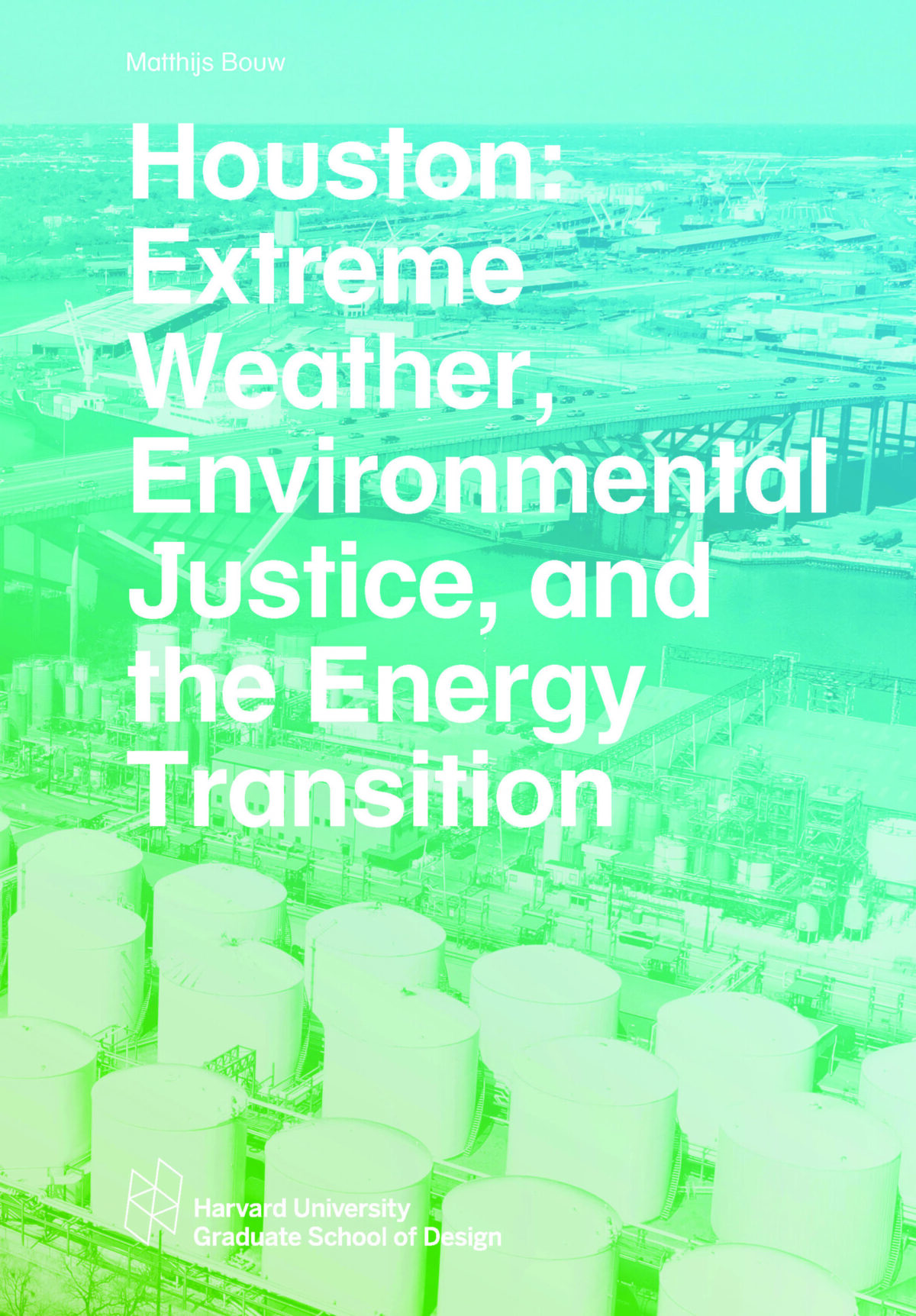Houston: Extreme Weather, Environmental Justice, and the Energy Transition

Houston, Texas, has been called the “prophetic city.” It is a city that is reflective of America’s past, with its celebration of individualism and economic opportunity combined with legacies of extraction and racial disparities. As a testament to its continued dynamism, it is also a city that is rapidly changing, driven by its increasingly diverse and growing population. In Houston, the drivers of the twentieth-century city—cars and fossil fuels—will have to give way to those of the twenty-first century: extreme weather, environmental justice, and the energy transition.
In this studio, we explored the challenges and opportunities that come with this transformation along these three drivers and designed responses on various scales, with a focus on the areas around the Ship Channel, which runs from downtown Houston to Galveston Bay.
1: Extreme Weather
The climate crisis has manifested itself in Houston from repeated five-hundred-year flood events to cold snaps and subsequent grid failure. As in most places, such events disproportionately impact the city’s marginalized populations. In response, Houston has developed an ambitious resilience strategy and climate action plan supported by billions of dollars in funding. Climate adaptation, however, is challenging given the city’s geography and the state of its infrastructure. Climate mitigation might even be more difficult due to the dominance of the car and the petrochemical industry.
2: Environmental Justice
Houston’s lack of zoning, its history of structural racism, and its role as a center for distribution, logistics, and petrochemical industries have resulted in massive disparities in health outcomes, educational attainment, and economic opportunity—especially for the communities of color that have been bisected by highways or that are adjacent to the industrial areas of the Ship Channel. How can legacies of pollution be remediated, and how can these injustices be remedied?
3: Energy Transition
The City of Houston, and even industry organizations such as the Greater Houston Partnership, acknowledge the need to transition away from fossil fuels. For a city shaped by the energy industry, especially around the Ship Channel, this will provide opportunities to reimagine large swaths of its urban area. Questions about this transition, however, abound. How can it unroll, and will it be fast enough? Who will drive this transition, and who will benefit? What are the spatial interventions that can trigger innovation?
This studio sought to begin to answer some of these questions. Taken together, these designs form a catalog of responses that can stimulate conversation about Houston’s transformation to a climate-resilient and “just city” in a post-carbon world.
Houston: Extreme Weather, Environmental Justice, and the Energy Transition is a Studio Report from the Spring 2022 semester at the Harvard University Graduate School of Design based on the option studio of the same name taught by Matthijs Bouw.
Series Design by Zak Jensen and Laura Grey
Report design by Christopher Ball and Skyler Smith
Softcover, 230 pages, 17 x 24.5 cm